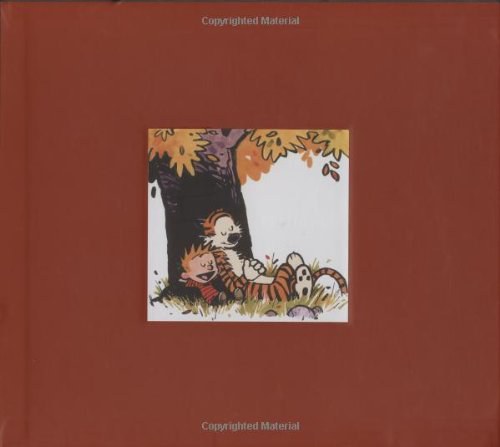
语篇研究
书刊介绍
《语篇研究》内容简介
语篇分析作为一门学科,开始于20世纪50年代到60年代,发展于20世纪70年代,成熟于20世纪80年代到90年代。进入21世纪,语篇分析在人文社会科学“话语转向”的势头中,已经超越了语言学领域的其他任何一门学科。本书主要由七章组成:第一章语篇研究的概况、第二章语篇研究的历史回顾、第三章篇章性的标准、第四章语篇的衔接、第五章语篇的连贯、第六章语篇结构、第七章批评语篇分析。在语篇分析的概况及流派部分里,作者对这一领域的重要学者进行了梳理,对他们在语篇分析领域的主要贡献做了详尽的论述。在篇章性的标准这一章,作者介绍了什么是语篇特征,什么是篇章性、什么是篇章,以及衔接与连贯的概念、意图性、接受性、信息性、情景性及互文性。在语篇的衔接与连贯这两章中,作者介绍了衔接手段及衔接与连贯的关系,并从语义、语用及认知的角度分析了连贯问题。在语篇结构这一章,作者介绍了主位结构及主位推进模式、信息结构、会话语篇结构及会话分析。第七章为批评语篇分析,本章主要介绍批评语篇分析的理论框架、原则、研究内容、方法及批评语篇分析方法等。本书旨在对语篇研究领域作详尽深入的研究,本书是语篇分析的一本入门书,也是一本介绍语篇分析核心内容的著作。本书主要适用于语篇分析的学习者与研究者。
王天华,女,1973年出生,1995年在黑龙江大学英语系工作至今。现任黑龙江大学西语学院教授,博士生导师,中国功能语言学学会理事、中国语篇分析学会理事。2008年毕业于山东大学外国语学院,获得英语语言文学博士学位。研究方向为功能语言学、语篇分析和语用学。2008-2009美国UIS大学作访问学者。近五年来,主持承担国家哲学社科基金项目1项,教育部人文社科项目1项,教育部“留学回国人员科研启动基金”1项;参加教育部人文社科项目2项(均为成员第一),黑龙江省哲学社会科学项目2项(成员第一),主持承担并完成黑龙江省教育厅人文社科科研项目2项,参加黑龙江省高校教改项目1项(成员第一)。近几年,发表学术论文20余篇,其中,国家级期刊C类6篇、CSSCI论文10余篇。2011年出版语言学专著1部。获得2013黑龙江省社会科学优秀成果第十五届佳作奖1项。2014年获得黑龙江大学“杰出青年”称号。教学上主要承担功能语言学导论(博士生、硕士生课程)、语篇分析(博士生、硕士生课程)语言学概论(本科生)等本学科专业主干课。
作品目录
Preface前言
Chapter
1、Coming
to
Grips
with
Discourse
Analysis
1.1、Introduction
1.2、Discourse
analysis
1.3、Terms
issue
1.4、The
significance
of
discourse
analysis
1.5、The
scope
of
discourse
analysis
1.6、Principles
of
discourse
analysis
1.7、Approaches
to
discourse
analysis
1.8、Research
methods
in
discourse
analysis
1.9、Resources
for
doing
discourse
analysis
Chapter
2、A
Historical
Overview
of
Discourse
Analysis
2.1、Historical
background
2.2、The
origins
of
modern
discourse
analysis
2.3、The
emergence
of
discourse
analysis
as
anew
discipline
2.4、The
interdisciplinary
study
of
discourse
2.5、The
1990s
2.6、Discourse
analysis:
the
state
of
the
art
Chapter
3、Standards
of
Textuality
3.1、Texture,
textuality,
text-ness
3.2、Cohesion
3.3、Coherence
3.4、Intentionality
3.5、Acceptability
3.6、Informativity
3.7、Situationality
3.8、Intertextuality
Chapter
4、Discourse
Cohesion
4.1、Introduction
4.2、Reference
4.3、Substitution
4.4、Ellipsis
4.5、Conjunction
4.6、Lexical
cohesion
4.7、Cohesive
harmony
4.8、Structural
cohesion
4.9、Phonological
cohesion
4.10、Summary:
cohesive
devices
Chapter
5、Discourse
Coherence
5.1、Cohesion
and
coherence
5.2、Semantic
perspectives
5.3、Pragmatics
perspectives
5.4、Cognitive
perspectives
5.5、Informational
coherence
5.6、Summary:
approaches
to
coherence
Chapter
6、Discourse
Structure
6.1、Thematic
structure
and
thematic
progression
6.2、Information
structure
6.3、Conversational
discourse
structure
6.4、Sample
analysis
6.5、Conversation
analysis
Chapter
7、Critical
Discourse
Analysis
7.1、Introduction
7.2、Conceptual
and
theoretical
frameworks
7.3、Principles
of
CDA
7.4、Research
in
CDA
7.5、Methods
of
doing
CDA
7.6、CDA:
From
theory
to
Practice
References
Abstract
摘要
相关推荐
-

重新定义父母
《重新定义父母》内容简介:本书是介绍如何养育孩子心理的一本“心理养育”指南,是父母的上岗手册。和身体发育一样,0~18岁是孩子
-

不可打扰
《不可打扰》内容简介:自作者的前一部作品《上瘾》出版以来,埃亚尔在书里总结的四大产品逻辑已帮助全球数以千计的公司通过培养用
-

经济管理中C++程序设计
《经济管理中C++程序设计》内容简介:本书在介绍计算机编程的思想、方法及算法分析的基础上,以C++程序设计语言为教学实践语言,结
-

瑞典(第2版)
《瑞典(第2版)》内容简介:瑞典是北欧最大的国家,拥有漫长的海岸线、广阔的森林和大量的湖泊。它是世界上最北端的国家之一,自然
-

RocketMQ实战与原理解析
《RocketMQ实战与原理解析》内容简介:·RocketMQ由阿里开源,Apache开源项目,经受多年流量峰值考验,在多个性能指标上远超同类产
-

剖析三棱锥:寻求区域创新能力形成的立体路径
剖析三棱锥:寻求区域创新能力形成的立体路径 本书特色 陈玉川编著的《剖析三棱锥:寻求区域创新能力形成的立体路径》通过对区域创新能力器物层、制度层、文化层以及各层...
-

供应链管理实务(第2版)
《供应链管理实务(第2版)》内容简介:本书包括理解供应链、供应链驱动要素、供应链运营管理、供应链需求预测、供应链的综合计划、
-

沃顿商学院最受欢迎的谈判课
《沃顿商学院最受欢迎的谈判课》内容简介:《沃顿商学院最受欢迎的谈判课》内容简介::每一年,只有最优秀的学生才能进入沃顿商学院
-

大堰河 北方
《大堰河 北方》内容简介:《大堰河》是艾青的首部诗集,于1936年自费出版,收录诗作9首。《大堰河》现代性是不容置疑的,他将巴黎
-

黎介寿 黎磊石合传
《黎介寿 黎磊石合传》内容简介:有这样两位奋斗者,他们历经风雨沧桑,他们在无悔征程中奏响生命激情的乐章,他们在传奇岁月里谱写
-

张捷《房势》
《房势:解析房地迷局》内容简介:房地产的发展就是城市的发展,而发展中国家就是要首先让核心城市发达到与世界接轨的高度,进而形
-

Oracle从新手到高手
《Oracle从新手到高手》内容简介:本书主要介绍使用Oracle 12c数据库对数据进行管理和应用的知识。本书共分为18章,介绍了Oracle数
-

当代世界中的基督宗教
《当代世界中的基督宗教》内容简介:当代基督宗教三大教派在其发展中既有共同趋势、亦显各自侧重,在当代世界史和宗教史中有其重彩
-

五百年来谁著史
《五百年来谁著史》内容简介:本书运用历史唯物主义观点,以“基层组织”“财政金融”“世界大势”为三个支点,重新审视了公元1500
-

谈性说爱:写给女性的性心理24讲
《谈性说爱:写给女性的性心理24讲》内容简介:现代社会,女性的社会地位与自我认知都得到了很大提升,但在性的问题上,依然存在很
-

新经济政策是怎样被断送的:四:1929年4月16日——23日联共(布)中央委员会和中央监察
新经济政策是怎样被断送的:四:1929年4月16日——23日联共(布)中央委员会和中央监察 本书特色 苏联史,是人类历史上一个社会主义国家史;是人类一次探索、寻...
-

欧洲经济与货币联盟中的财政约束研究
欧洲经济与货币联盟中的财政约束研究 内容简介 本书以在欧洲经济与货币联盟中实施财政约束作为主线,采取历史与逻辑相统一、理论分析与经验分析相结合的研究方法,论证了...
-

隐形冠军:未来全球化的先锋(原书第2版)
《隐形冠军:未来全球化的先锋(原书第2版)》内容简介:本书的影响泛及国内外,阅读和研究这本书必须以国际化眼光和全球化视角,洞
-

论非传统的经济学智慧
论非传统的经济学智慧 本书特色 《论非传统的经济学智慧》是由首都经济贸易大学出版社出版的。论非传统的经济学智慧 内容简介 在中国经济学界,斯蒂格利茨的知名度极高...
-

人人都要懂的金融投资理财(全彩色图解版)
《人人都要懂的金融投资理财(全彩色图解版)》内容简介:财越理越多。要想积累财富,实现财务自由,你就要从现在开始规划你的财务





